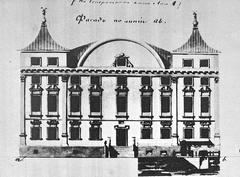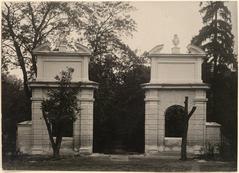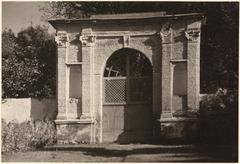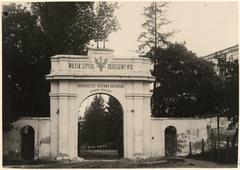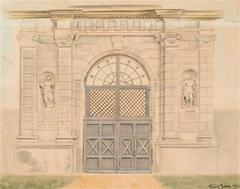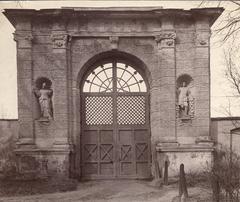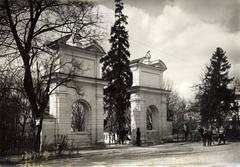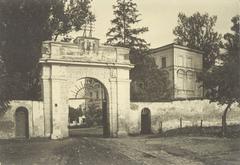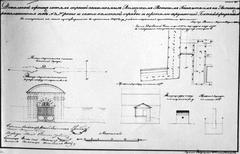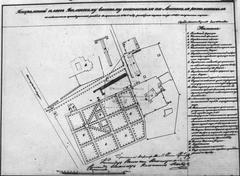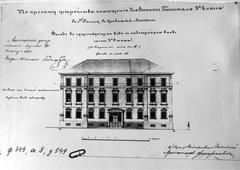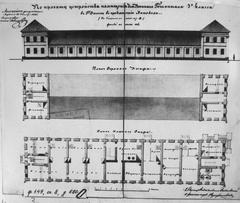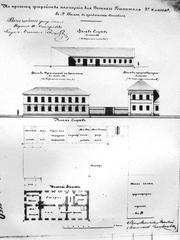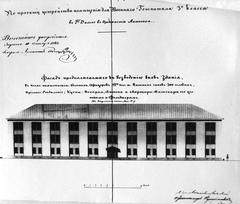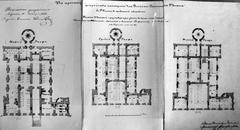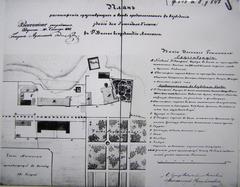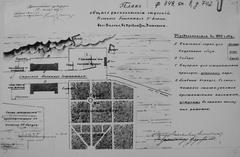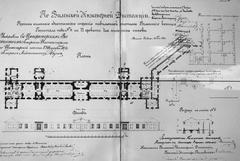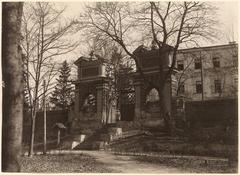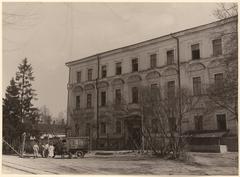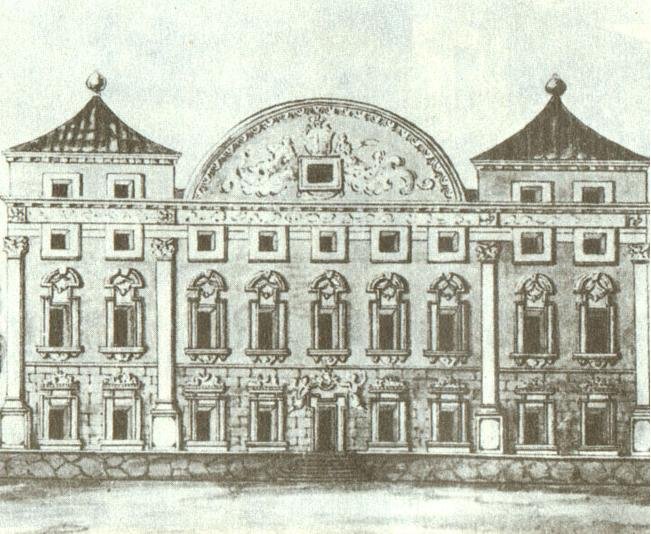
Sapieha Palace Vilnius, Lithuania: Visiting Hours, Tickets, and Historical Sites Guide
Date: 14/06/2025
Introduction
Sapieha Palace in Vilnius, Lithuania, is a magnificent Baroque monument and a vivid symbol of the city’s historical and cultural heritage. Set in the picturesque Antakalnis district, this restored palace—once known as “the little Versailles”—invites visitors to experience the grandeur of the Grand Duchy of Lithuania, now enlivened by contemporary art and cultural events. This comprehensive guide details the palace’s rich history, visiting hours, ticket information, accessibility, cultural highlights, and practical travel tips to ensure an enriching visit to one of Vilnius’s most treasured historical sites (Wikipedia; Go Vilnius; Sapiegurumai).
Table of Contents
- Historical Overview
- Visitor Information
- Cultural Experience and Amenities
- Restoration and Contemporary Role
- Frequently Asked Questions (FAQs)
- Summary and Resources
- References
Historical Overview
Sapieha Family Legacy and Origins
The site’s history begins in the late 16th century, with early ownership passing through several noble families. In 1682, Kazimierz Jan Sapieha—Grand Hetman of Lithuania—acquired the property, marking the start of the Sapieha family’s enduring legacy in Vilnius (Wikipedia). Renowned as patrons of science, culture, and the arts, the Sapieha family envisioned the palace as the centerpiece of an ambitious residential and religious complex, reflecting their status and cultural aspirations (Go Vilnius).
Baroque Construction and Artistic Flourish
Between 1689 and 1692, the palace was constructed by Italian architect Giovanni Pietro Perti, with frescoes by Michelangelo Palloni and elaborate Baroque interior decoration. The estate featured French formal gardens, a Trinitarian monastery, and the Church of Jesus the Saviour, forming an exceptional ensemble completed around 1717. The entire complex became known as “the little Versailles,” symbolizing both opulence and sophisticated taste (Sapiegurumai; We Love Lithuania).
19th–20th Century Transformations
Following the Sapieha family’s decline, the palace underwent significant change. Acquired by the Russian government in 1809, it was converted into a military hospital; later, during the Soviet era, it housed a military school. These uses led to the loss of much original Baroque ornamentation and several periods of neglect (LRT).
Restoration and 21st-Century Revival
After Lithuania’s independence in 1990, efforts intensified to research and restore the palace’s heritage, guided by international conservation standards. Extensive renovation from 2012 onwards uncovered original frescoes and decorative elements, culminating in a comprehensive restoration completed in 2024. The palace now serves both as a preserved historical site and as a vibrant branch of the Contemporary Art Centre (CAC), hosting cultural events and exhibitions (cpva.lt; cac.lt).
Visitor Information
Visiting Hours
As of July 2024:
- Tuesday–Friday: 12:00–20:00
- Saturday: 11:00–19:00
- Sunday: 11:00–18:00
- Monday: Closed
- Open on select public holidays (e.g., February 16, March 11, May 1, June 24, July 6): 12:00–20:00
Visit the CAC Tickets & Information page for real-time updates.
Tickets and Admission
- Regular ticket: €8
- Concession ticket: €4
- Family ticket (up to 2 adults, 4 children under 18): €15
- Vilnius Pass ticket: €5
- Joint CAC and Sapieha Palace ticket (valid 5 days): €15
Discounts: Every Wednesday and for eligible groups (seniors, students, military personnel, etc.).
Free Admission: Preschool children, persons with disabilities (+1 companion), seniors 80+, Lithuanian museum employees, art students, and educational group leaders.
Full eligibility details.
Tickets can be purchased online through the CAC website or at the palace entrance.
Accessibility
Sapieha Palace is wheelchair accessible, with ramps, elevators, and adapted restrooms. Assistance is available; visitors with additional needs are encouraged to contact the front desk in advance:
- Front desk: (+370 5) 2121945
- General inquiries: +370 609 79415
How to Get There
- Location: L. Sapiegos g. 13, LT-10312 Vilnius, Lithuania
- Public Transport: Bus routes 1G and 2G stop nearby
- By Car: Limited parking is available
- Walking: 20-minute walk from Vilnius Old Town
Main entrances are through the restored Baroque gates on Antakalnis street or from the historic park.
Maps and virtual tours are accessible on the official CAC website.
Cultural Experience and Amenities
Guided Tours and Exhibitions
- Guided Tours: Offered in Lithuanian and English; advance booking recommended for English-language or group tours.
- Contemporary Art Exhibitions: Curated by CAC, featuring both Lithuanian and international artists, with site-specific installations that interact with the Baroque setting.
- Special Events: Concerts, workshops, and seasonal festivals.
- Amenities: Restrooms, cloakrooms, benches in the park, shaded relaxation areas, and plans for a future café and reading room.
Photography: Non-flash photography is typically allowed; tripods and professional equipment require advance permission.
Nearby Attractions
- Trinitarian Monastery and Church of Jesus the Saviour: Adjacent to the palace
- St. Peter and Paul Church: Baroque interior, short walk away
- Vilnius Old Town: UNESCO World Heritage Site
- Verkiai Regional Park: For nature walks and panoramic views
- Local cafés and restaurants: In Antakalnis and the Old Town
Restoration and Contemporary Role
The palace’s six-year restoration, completed in 2024, revived its Baroque grandeur while adapting it for contemporary cultural use (cpva.lt). As a branch of the Contemporary Art Centre, Sapieha Palace now hosts rotating art exhibitions, concerts, and educational programs. This revitalization exemplifies the successful integration of heritage preservation with modern cultural engagement, making Sapieha Palace both a monument of the past and a living center for creativity and community (neakivaizdinisvilnius.lt).
Frequently Asked Questions (FAQs)
Q: What are the Sapieha Palace visiting hours?
A: Tuesday–Friday: 12:00–20:00; Saturday: 11:00–19:00; Sunday: 11:00–18:00; closed on Mondays.
Q: How do I buy tickets?
A: Tickets are available online via the CAC website or at the palace entrance.
Q: Is the palace accessible for visitors with disabilities?
A: Yes, with ramps, elevators, and adapted restrooms. Contact the front desk for specific needs.
Q: Are guided tours available?
A: Yes, in Lithuanian and English. Book in advance for group or English-language tours.
Q: Can I take photographs inside the palace?
A: Non-flash photography is permitted; tripods require advance permission.
Q: Are there amenities for visitors?
A: Yes—restrooms, cloakrooms, benches, and plans for a café and reading room.
Summary and Resources
Sapieha Palace is a beacon of Lithuania’s Baroque heritage and cultural resilience. Its meticulous restoration and ongoing programming by the Contemporary Art Centre offer visitors a dynamic space where history, art, and innovation converge. The palace’s accessibility, central location, and diverse events make it a must-visit for anyone exploring Vilnius’s historical sites or seeking inspiration in its creative present (Wikipedia; Sapiegurumai; cpva.lt; cac.lt; Go Vilnius; neakivaizdinisvilnius.lt).
Plan your visit: Check current exhibitions, book tickets online, and stay updated via the Contemporary Art Centre’s social media. For more insights into Vilnius’s historical sites and cultural life, explore related resources and the Audiala app.
References
- Sapieha Palace, Vilnius: Visiting Hours, Tickets & Guide to This Historic Baroque Gem, 2025, Go Vilnius
- Sapieha Palace, Vilnius – Wikipedia, 2025
- Sapiegurumai.lt – History and Restoration of Sapieha Palace, 2025
- Vilnius Restores Landmark Monument of the Grand Duchy of Lithuania, 2025, LRT
- Under the Revived Arches of the Sapieha Palace: An Intriguing Dialogue Between Heritage and Contemporary Art, 2025, CPVA
- Contemporary Art Centre (CAC) Official Website, 2025
- Sapieha Palace Visitor Information, Neakivaizdinis Vilnius, 2025


